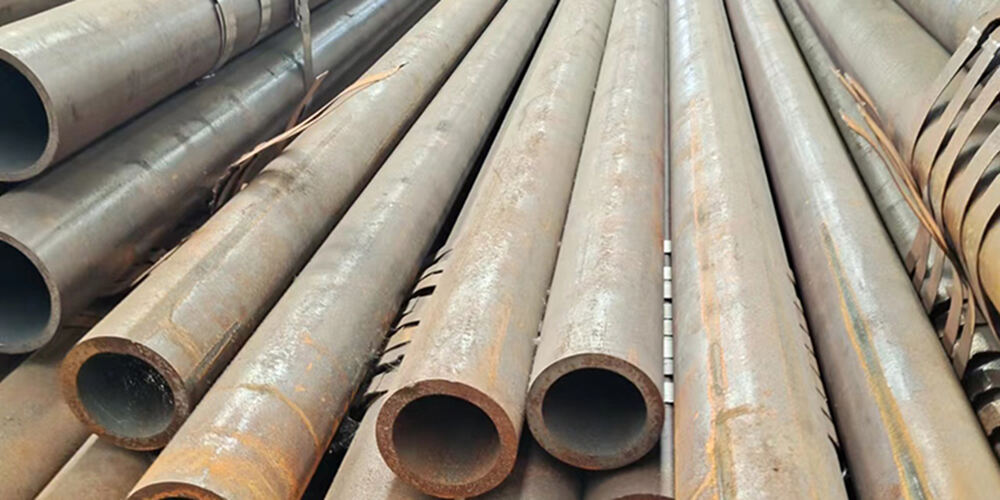In modern industry and construction, piping systems play a vital role. From the transportation of oil and gas to the support of building structures to the piping of water treatment systems, the choice of pipes directly affects the efficiency, stability and economy of the system. Carbon Steel Pipe, as a widely used metal pipe, has become the choice of many users due to its high strength, good processing performance and relatively low cost. This article will comprehensively introduce the definition, types, main applications and advantages of carbon steel pipes so that you can have a more detailed understanding of it.

Carbon steel pipe is a metal pipe made of carbon steel as the main material. The so-called carbon steel refers to an alloy with iron and carbon as the main components, in which the carbon content is usually between 0.02% and 2.11%. According to the different carbon content, carbon steel can be divided into low carbon steel, medium carbon steel and high carbon steel. Carbon steel pipe is formed by various hot or cold processing processes (such as hot rolling, cold rolling, welding, seamless, etc.) and is used for the transportation or structural support of liquids, gases or solid particles.
(1) Seamless Carbon Steel Pipe: Seamless carbon steel pipe is made from a whole piece of steel billet through perforation, hot rolling or cold rolling. The pipe body has no welds and the overall structure is more uniform. It has high compressive strength and is suitable for use under high temperature, high pressure or harsh conditions, such as high-pressure boilers, oil transportation, pressure vessels, etc.
(2) Welded Carbon Steel Pipe: Welded carbon steel pipe is made by welding steel plates or steel strips after rolling. It can be divided into straight seam welded pipes and spiral welded pipes according to the weld form. It has high production efficiency and low cost, and is suitable for large-diameter pipelines and structural supports.
(1) Circular pipe: The most widely used cross-sectional form with the smallest fluid resistance, widely used in liquid and gas transportation.
(2) Square pipe and rectangular pipe: It has stronger structural support capabilities and is often used in buildings and mechanical frame structures.
(1) Low carbon steel pipe (carbon content less than 0.25%): Due to the low carbon content, it has good plasticity and toughness, suitable for cold processing and welding. Low carbon steel pipes are mainly used in automobile exhaust systems, water pipes, furniture pipes, etc.
(2) Medium carbon steel pipe (carbon content 0.25%~0.60%): High strength, moderate hardness, used for mechanical parts and building structures.
(3) High carbon steel pipe (carbon content greater than 0.60%): High hardness, strong wear resistance, but relatively brittle, mainly used to manufacture knives, springs, stamping molds, high-strength shafts, etc.
The raw material of carbon steel pipe is round tube billet, which is cut by a cutting machine into a billet with a length of about 1 meter and sent to the furnace for heating via a conveyor belt. The billet is sent to the furnace for heating at a temperature of about 1200 degrees Celsius. The fuel is hydrogen or acetylene. Temperature control in the furnace is a key issue. After the round tube billet is taken out of the furnace, it must be pierced by a pressure piercing machine. Generally, the more common piercing machine is a tapered roller piercing machine. This piercing machine has high production efficiency, good product quality, large piercing and expansion, and can pierce a variety of steel types.
After piercing, the round tube billet is successively subjected to three-roller oblique rolling, continuous rolling or extrusion. After extrusion, it must be removed from the tube and sized. The sizing machine uses a conical drill bit to rotate at high speed into the steel billet to punch holes to form a steel pipe. The inner diameter of the steel pipe is determined by the outer diameter length of the sizing machine drill bit. After sizing, the steel pipe enters the cooling tower and is cooled by water spray.
After cooling, the steel pipe will be straightened. After straightening, the steel pipe is sent to the metal flaw detector (or water pressure test) by a conveyor belt for internal flaw detection. If there are cracks, bubbles and other problems inside the steel pipe, they will be detected. After quality inspection, the steel pipe must also pass strict manual selection. After quality inspection, the steel pipe is sprayed with paint with numbers, specifications, production batch numbers, etc. It is then hoisted into the warehouse by a crane.
Carbon steel itself is easily oxidized and corroded, but its service life can be extended through a variety of anti-corrosion technologies:
Carbon steel pipe, as an important pipe material, plays an irreplaceable role in many industries. Its diverse types, wide applications and high cost performance make it the preferred material in the fields of construction, energy, chemical industry, etc.
HNJBL is a professional steel manufacturer and supplier. Our company's main products include carbon steel, stainless steel, wear-resistant steel, steel profiles, coated steel, etc. Complete specifications, stable quality, and sufficient quantity.
 Hot News
Hot News2025-06-10
2025-06-04
2025-05-26
2025-05-19
2025-05-14
2025-05-06

Copyright © Henan Jinbailai Industrial Co.,Ltd. All Rights Reserved - Privacy Policy